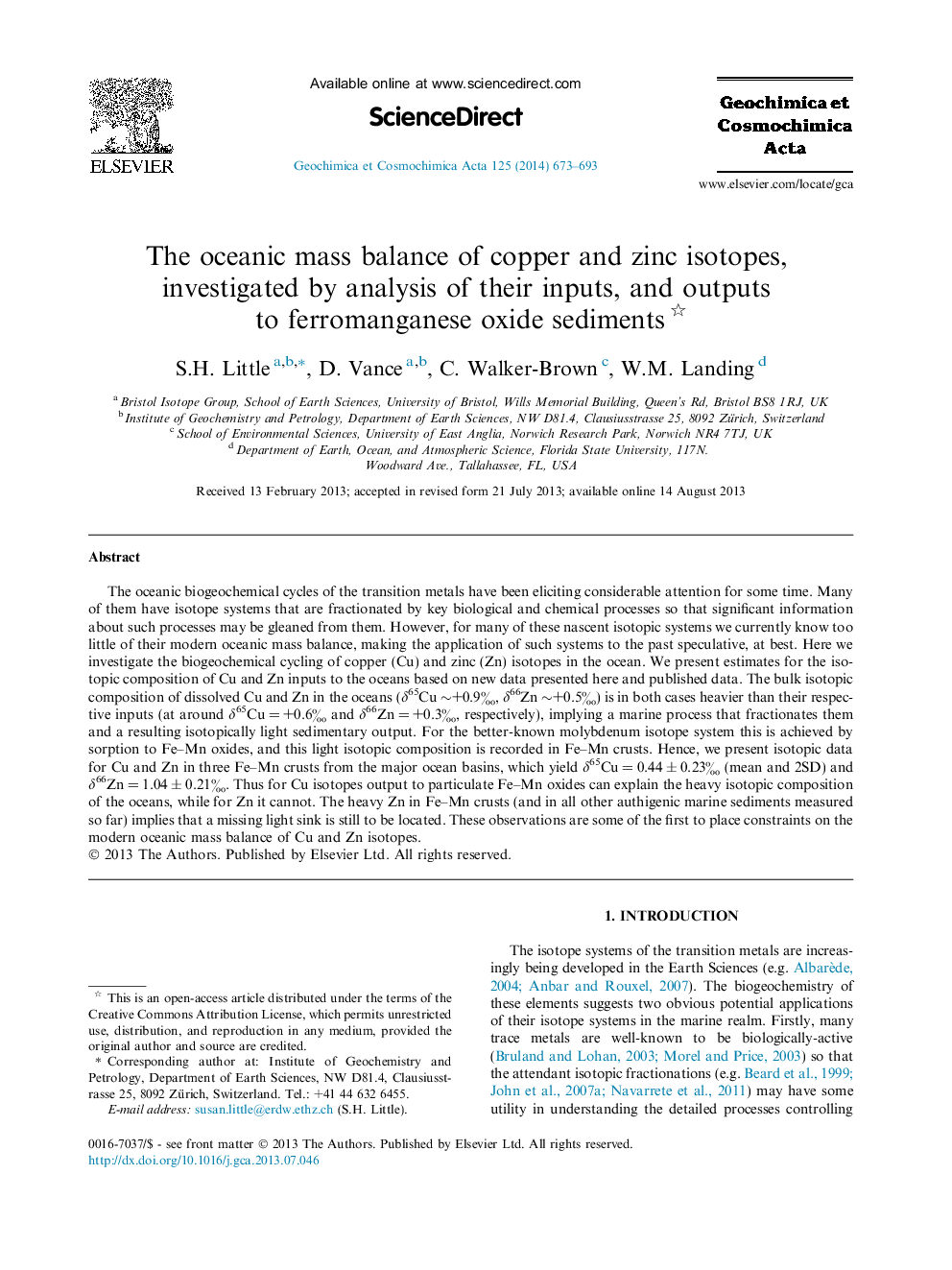| کد مقاله | کد نشریه | سال انتشار | مقاله انگلیسی | نسخه تمام متن |
|---|---|---|---|---|
| 6438727 | 1638032 | 2014 | 21 صفحه PDF | دانلود رایگان |
عنوان انگلیسی مقاله ISI
The oceanic mass balance of copper and zinc isotopes, investigated by analysis of their inputs, and outputs to ferromanganese oxide sediments
ترجمه فارسی عنوان
تعادل جرم اقیانوسی از ایزوتوپهای مس و روی با استفاده از تجزیه و تحلیل ورودی ها و خروجی ها به رسوبات اکسید فروموننج
دانلود مقاله + سفارش ترجمه
دانلود مقاله ISI انگلیسی
رایگان برای ایرانیان
موضوعات مرتبط
مهندسی و علوم پایه
علوم زمین و سیارات
ژئوشیمی و پترولوژی
چکیده انگلیسی
The oceanic biogeochemical cycles of the transition metals have been eliciting considerable attention for some time. Many of them have isotope systems that are fractionated by key biological and chemical processes so that significant information about such processes may be gleaned from them. However, for many of these nascent isotopic systems we currently know too little of their modern oceanic mass balance, making the application of such systems to the past speculative, at best. Here we investigate the biogeochemical cycling of copper (Cu) and zinc (Zn) isotopes in the ocean. We present estimates for the isotopic composition of Cu and Zn inputs to the oceans based on new data presented here and published data. The bulk isotopic composition of dissolved Cu and Zn in the oceans (δ65Cu â¼+0.9â°, δ66Zn â¼+0.5â°) is in both cases heavier than their respective inputs (at around δ65Cu = +0.6â° and δ66Zn = +0.3â°, respectively), implying a marine process that fractionates them and a resulting isotopically light sedimentary output. For the better-known molybdenum isotope system this is achieved by sorption to Fe-Mn oxides, and this light isotopic composition is recorded in Fe-Mn crusts. Hence, we present isotopic data for Cu and Zn in three Fe-Mn crusts from the major ocean basins, which yield δ65Cu = 0.44 ± 0.23â° (mean and 2SD) and δ66Zn = 1.04 ± 0.21â°. Thus for Cu isotopes output to particulate Fe-Mn oxides can explain the heavy isotopic composition of the oceans, while for Zn it cannot. The heavy Zn in Fe-Mn crusts (and in all other authigenic marine sediments measured so far) implies that a missing light sink is still to be located. These observations are some of the first to place constraints on the modern oceanic mass balance of Cu and Zn isotopes.
ناشر
Database: Elsevier - ScienceDirect (ساینس دایرکت)
Journal: Geochimica et Cosmochimica Acta - Volume 125, 15 January 2014, Pages 673-693
Journal: Geochimica et Cosmochimica Acta - Volume 125, 15 January 2014, Pages 673-693
نویسندگان
S.H. Little, D. Vance, C. Walker-Brown, W.M. Landing,
